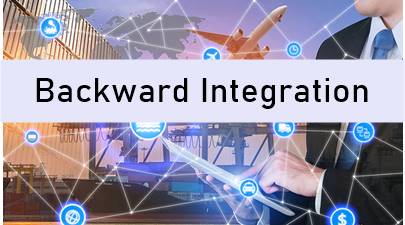
Table of Contents
Backward Integration
Defining Backward Integration
Backward integration is a vertical integration type wherein a company widens its role to fulfil such tasks that were formerly completed by businesses that are on the top of the supply chain. In simple words, backward integration is a situation when a company purchases another company supplying essential services or products required to produce more.

For instance, a company may purchase all of the Raw Materials or inventory from their supplier. Often, companies complete backward integration with either merging or acquiring with other businesses.
Get to Know About Backward Integration
Often, companies use a backward integration strategy as a method to take over a specific part of the supply chain of a company. This supply chain begins with raw materials’ delivery to a manufacturer to a supplier and ends with the sale of the end product to the consumer.
Backward integration is a technique that makes use of vertical integration to enhance Efficiency. Vertical integration is wherein a company consists of several segments of the supply chain with an objective of controlling either one portion or all of the production process.
Suppose there is a bakery that buys the wheat farm. In this situation, a retail supplier will be purchasing one of the manufacturers; thus, eradicating middlemen and the competition from the picture.
Advantages of Backward Integration
Companies go with this integration method when they expect to gain more efficiency and save expenses. For instance, backward integration can help cut transport costs, enhancing profit margins and reinforcing the company to Handle competition seamlessly.
Talk to our investment specialist
Disadvantages of Backward Integration
This method can be Capital intensive. This means that it generally demands a considerable amount of money to buy a portion of the supply chain. If a company has to buy a production or supplier Facility, it might require to take debts to fulfil backward integration.
Example of Backward Integration
Several conglomerates and large companies execute backward integration, including Amazon. This well-known firm started its operations as an online book retailer back in 1995. However, by 2009, it opened a dedicated publishing division by acquiring the rights to new and old titles.
Today, although Amazon sells books that have been published by others; it also owns a publishing platform that helps authors bring their books online and boost the profit by controlling their own publication and distribution on the Kindle. In simple words, Amazon used this integration method to expand the business and turn a book retailer as well as a publisher.
All efforts have been made to ensure the information provided here is accurate. However, no guarantees are made regarding correctness of data. Please verify with scheme information document before making any investment.






